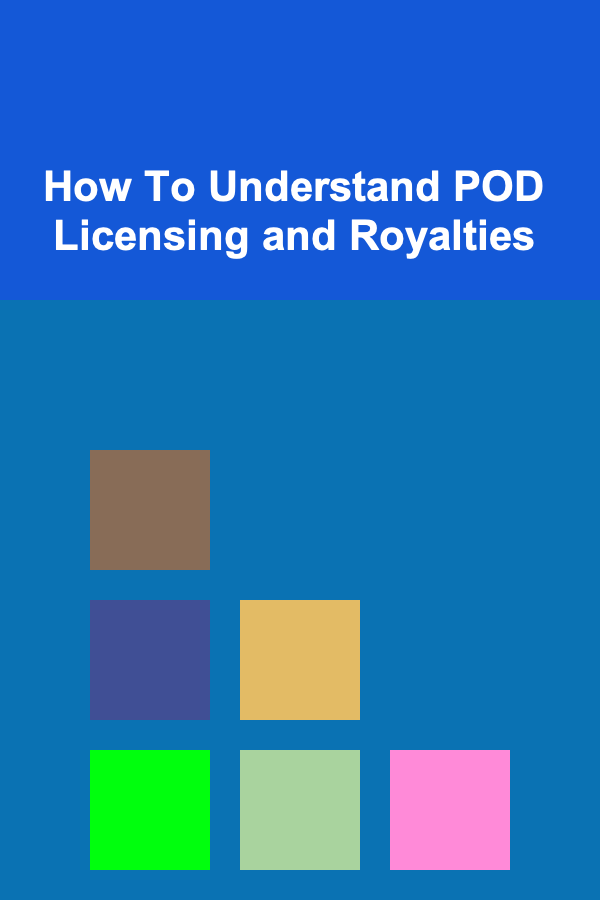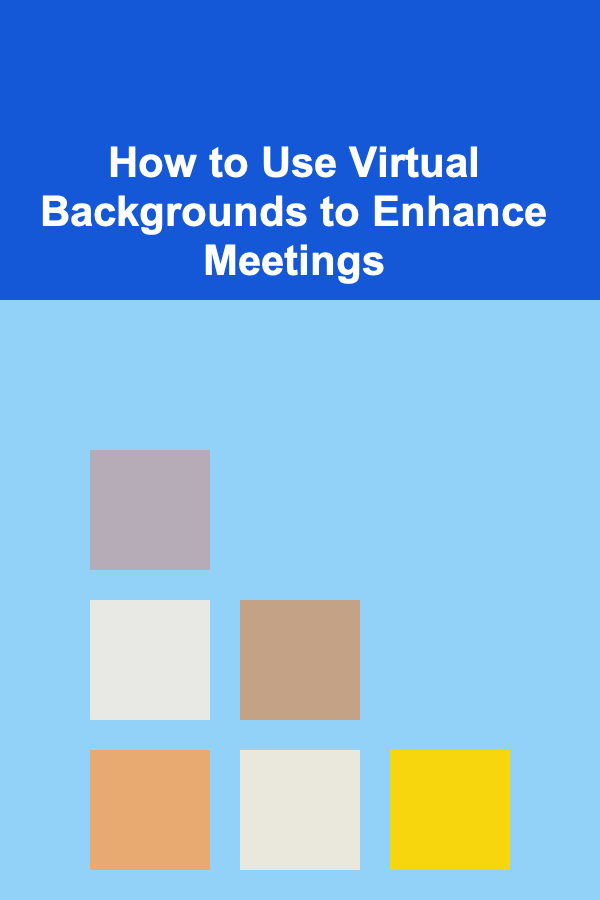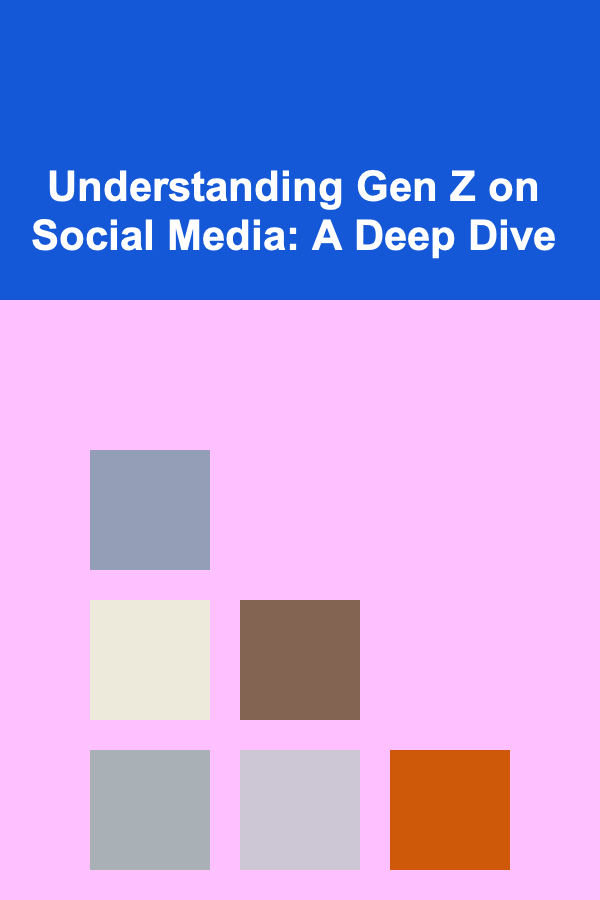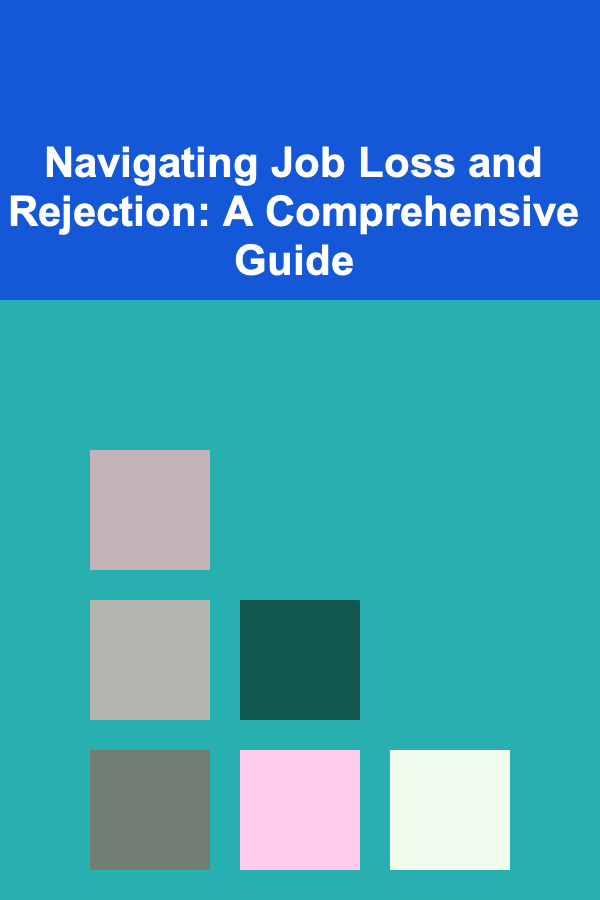
How To Understand POD Licensing and Royalties
ebook include PDF & Audio bundle (Micro Guide)
$12.99$7.99
Limited Time Offer! Order within the next:

Print on Demand (POD) services have revolutionized the world of self-publishing and custom merchandise. Whether you're a writer, designer, or entrepreneur, POD platforms allow you to sell physical products like books, clothing, and accessories without having to invest upfront in large inventory or deal with complex logistics. However, with these opportunities come some important aspects that need to be understood, particularly regarding licensing and royalties.
In this article, we will dive deep into the intricacies of POD licensing and royalties, explaining how they work, why they matter, and how you can maximize your earnings and protect your intellectual property.
What is Print on Demand (POD)?
Print on Demand is a business model where products are printed only after an order is made. This means there is no need to keep stock, and production costs are minimal, as each item is made to order. POD services allow creators to sell a wide range of products with custom designs, such as:
- Books (for authors)
- Apparel (for designers and fashion entrepreneurs)
- Home decor items (such as prints, pillows, and mugs)
- Accessories (like phone cases and bags)
One of the key benefits of POD is that it eliminates upfront investment in bulk production and inventory storage. The POD company handles the printing, packaging, and shipping, allowing you to focus on creating and marketing your designs.
Licensing in POD
Understanding licensing in the context of POD is essential for both creators and those who wish to use designs or content made by others. Licensing refers to the legal permissions granted by the intellectual property holder to use their content or designs in a particular way.
Types of POD Licenses
When using a POD service, there are typically two types of licenses to consider:
1. Exclusive License
An exclusive license means that you, as the licensee (the person purchasing the license), have the sole rights to use the design or intellectual property in a specific way. This often means the creator of the content cannot license the same design or content to anyone else for the same purpose.
For example, if you purchase an exclusive license for a t-shirt design, the creator cannot sell that design to anyone else who wants to print it on a t-shirt.
2. Non-Exclusive License
A non-exclusive license means that you, as the licensee, can use the content, but the creator can license it to others as well. With a non-exclusive license, there may be many other people using the same design on POD products.
For instance, if you acquire a non-exclusive license for a book cover design, you are allowed to use that design for your book, but other authors can also purchase the same design from the creator and use it for their books.
3. Royalty-Free License
A royalty-free license means that you do not have to pay royalties for each product sold using the design. Once you have purchased the license, you have the right to use the design without needing to pay any ongoing fees to the creator.
However, the term "royalty-free" can be confusing. While it implies no ongoing royalties, the creator may still charge a flat fee for the license or impose restrictions on usage, such as limiting the number of prints or the scope of the product category.
4. Creative Commons License
Creative Commons (CC) licenses allow content creators to share their work with specific usage rights. In the POD world, this could mean that certain designs are available to use under a Creative Commons license, with the creator specifying what is and isn't allowed. Some CC licenses may require attribution, while others may restrict commercial use, which is critical for POD sellers.
For example, a design with a CC Attribution-NonCommercial (CC BY-NC) license might allow you to print the design on a mug but would prohibit selling the mug.
Licensing Agreement Terms
When using POD services, it's important to pay attention to the licensing terms that apply to the designs or content you use. Here are some key terms you may encounter in licensing agreements:
- Scope of Use: This specifies what you can and cannot do with the licensed content. For POD, this might include whether you can use the design on physical products, whether it's exclusive to a particular product type, or if it can be reproduced and sold by others.
- Territory: Some licenses may limit the geographical regions in which you can sell the products featuring the licensed content.
- Duration: Licensing agreements may specify a time frame during which you have permission to use the design or content. Once the license expires, you may need to renew it or cease selling products featuring the design.
- Modifications: Some licenses may permit or prohibit alterations to the design. If you're selling customized POD items, it's essential to understand whether you're allowed to tweak the design for individual customers.
Understanding POD Royalties
Royalties refer to the payments made to the creator or the owner of the intellectual property (IP) for the use of their work. In the context of POD, royalties are typically earned each time a product featuring the creator's design is sold.
How Royalties Work in POD
When you sell a product through a POD service, you typically earn royalties based on the sale price of the item. Here's how royalties generally work:
-
Pricing Structure: The POD platform usually provides a base price for each product, which includes the cost of production (printing, materials, etc.), packaging, and shipping. This base price is subtracted from the sale price, and the remainder is your royalty.
For example, if a t-shirt has a base price of $12 and you sell it for $20, the royalty would be $8 (the difference between the sale price and the base price).
-
Royalty Percentage: Depending on the POD platform, royalties may either be a flat rate per product or a percentage of the sale price. In some cases, the percentage may vary depending on the product type or the total volume of sales.
-
Multiple Revenue Streams: If you are both the creator of the content and the seller of the POD products, the royalties you receive represent the earnings from the design itself. Additionally, you can set your own pricing and profit margin, which will directly affect the royalties you earn per sale.
-
Taxation of Royalties: Royalties are generally considered taxable income. In many countries, you will need to report the income you receive from royalties as part of your earnings. It's essential to understand the tax obligations related to your royalties and seek advice from an accountant or tax professional if necessary.
Factors That Affect POD Royalties
Several factors can affect how much you earn in royalties from your POD sales:
- Product Type: Different POD products have different base prices. For instance, a t-shirt might have a different base price than a hoodie or mug, which will impact the royalty you earn.
- Pricing Strategy: How you price your products will determine how much profit you make. A higher sale price can result in higher royalties, but it may also affect sales volume, so balancing the price is key.
- POD Platform Fees: Most POD services charge a fee for using their platform, which is often deducted from your royalties. Some platforms may also charge for additional services, like marketing or promotional tools.
Maximizing POD Royalties
To maximize your royalties and ensure you're making the most of your POD business, consider the following strategies:
1. Pricing Your Products Effectively
Your product price should strike a balance between being competitive and ensuring you're earning a sufficient profit. Look at other sellers in your niche to get an idea of what similar products are priced at, but don't be afraid to set a slightly higher price if the quality of your designs or products justifies it.
2. Optimize Your Designs for Multiple Products
Instead of focusing on one type of product, expand your designs to different items. For instance, if you've created a popular t-shirt design, consider adapting it for mugs, hoodies, tote bags, or phone cases. This allows you to reach a wider audience and increase your royalty potential.
3. Promote Your Products
Marketing is crucial for driving sales. Use social media, influencer marketing, or paid advertising to promote your POD products. More visibility can lead to more sales, which in turn means more royalties.
4. Offer Limited Edition or Exclusive Designs
Creating a sense of urgency can encourage customers to purchase your products. Limited edition or exclusive designs can be priced higher, and they often appeal to buyers who want something unique.
5. Use POD Platforms with Higher Royalties
Some POD platforms offer higher royalty rates than others. Do your research and find a platform that allows you to keep a larger portion of your earnings. You can also try multiple platforms to test which one provides the best return.
Protecting Your Intellectual Property
While POD offers incredible opportunities, it's important to protect your intellectual property. Ensure that you own the rights to the designs you are selling, and avoid using copyrighted content without permission. To safeguard your work:
- Register Your Designs: In some countries, you can register your designs as intellectual property to protect against unauthorized use.
- Monitor Your Sales: Keep an eye on your sales to ensure that your designs aren't being used by unauthorized sellers.
- Report Violations: If you find someone using your work without permission, you can often report the violation to the POD platform or take legal action if necessary.
Conclusion
Understanding POD licensing and royalties is essential for creators who want to succeed in the print-on-demand business. By understanding the different types of licenses, how royalties work, and how to maximize your earnings, you can make informed decisions that will help you build a successful POD business. Remember to protect your intellectual property and regularly assess your pricing and promotional strategies to ensure long-term profitability.

Creating Passive Income by Building and Selling AI Models
Read More
How to Develop a Sales Territory Strategy for Effective Coverage
Read More
How to Use Virtual Backgrounds to Enhance Meetings
Read More
Understanding Gen Z on Social Media: A Deep Dive
Read More
Navigating Job Loss and Rejection: A Comprehensive Guide
Read More
How to Integrate AR into Your Retail Store
Read MoreOther Products

Creating Passive Income by Building and Selling AI Models
Read More
How to Develop a Sales Territory Strategy for Effective Coverage
Read More
How to Use Virtual Backgrounds to Enhance Meetings
Read More
Understanding Gen Z on Social Media: A Deep Dive
Read More
Navigating Job Loss and Rejection: A Comprehensive Guide
Read More